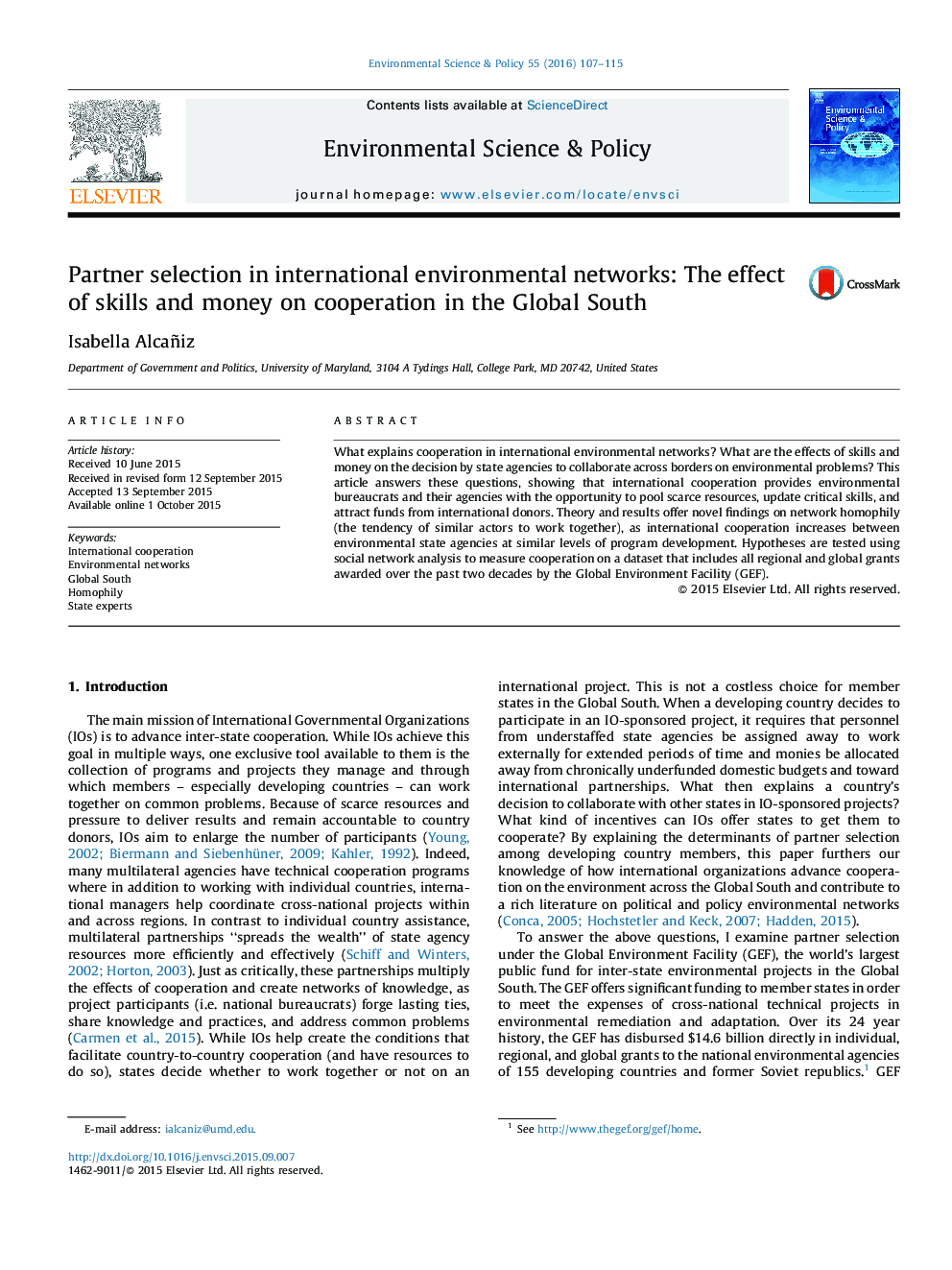| Article ID | Journal | Published Year | Pages | File Type |
|---|---|---|---|---|
| 10504556 | Environmental Science & Policy | 2016 | 9 Pages |
Abstract
What explains cooperation in international environmental networks? What are the effects of skills and money on the decision by state agencies to collaborate across borders on environmental problems? This article answers these questions, showing that international cooperation provides environmental bureaucrats and their agencies with the opportunity to pool scarce resources, update critical skills, and attract funds from international donors. Theory and results offer novel findings on network homophily (the tendency of similar actors to work together), as international cooperation increases between environmental state agencies at similar levels of program development. Hypotheses are tested using social network analysis to measure cooperation on a dataset that includes all regional and global grants awarded over the past two decades by the Global Environment Facility (GEF).
Related Topics
Physical Sciences and Engineering
Energy
Renewable Energy, Sustainability and the Environment
Authors
Isabella Alcañiz,
